Don’t feel too bad. Even megastars like Avicii and his 15.5 million dollar home can get termites…. not just us regular folks.
Last spring (May 2014), we responded to a call at a large newer house—built in 2010—in a recently-developed upscale neighborhood in the Crestview, FL area. The termite pre-construction soil treatment (“pre-treat”) had been done by another pest control company about 4 years prior during construction of the home. If done properly and along with cooperation by the contractor or subcontractor in terms of a thorough, undisturbed treatment barrier, this pre-treat should have protected the structure for at least 5 years. However, the pre-treat typically only comes with a 1-year warranty (the first year) so the homeowner must renew annually on the anniversary date in order to maintain it and, unfortunately, the homeowner in this case had neglected to renew the warranty.
Well, when we arrived and walked into the house, the homeowner told us she had been having a huge swarm of constantly-emerging flying bugs coming in the house and it appeared that they were actually coming out of the walls….and, that there were irregular shaped spots of mud appearing in the drywall in various spots around the master bedroom and a bunch of bugs both dead and alive (swarmers) and some wings in one of the master bedroom window sills.
As we were doing the inspection, we did indeed find termite emergence holes which is one of the main signs indicating termite activity. In explanation, as subterranean termites ingest the wood (destroying the wood and therefore causing damage), they commute in shelter tubes (AKA “mud tubes”) from the ground up to further and further into the structure they are infesting so the “emergence hole” in the drywall is where they chewed a hole through the sheetrock and when they discover that they can’t continue in that direction, they cap off the mud tube, which appears in the drywall as irregularly-shaped holes filled with drying mud. So, if the termites are active working up into the house at that time, when you scrape away or poke into the spots of mud, you should see live subterranean termite workers as you can see up to the right here in the photo.
We also did indeed find the other primary sign of termite activity which is the presence of termite reproductives or “alates” commonly called termite swarmers—dead, alive, and broken-off wings—in the window sills and on the floor and, mostly because of the larger average size and the golden color (as opposed to black swarmers with our native species, the Eastern Subterranean Termite), we were able to determine that this particular infestation was that of the Formosan Subterranean Termite. As we did our preliminary inspection of the entire house, we also found these termite activity signs in the master bathroom, exterior wall in the dining room area, and in the garage.
We then measured off the home perimeter (from around the exterior), and gave her a free (no obligation) written evaluation and estimate for our treatment and ongoing service. We explained to her everything about the treatment methods including how, with this type of situation with Formosan termite activity, a complete treatment includes all phases of subterranean termite treatment, and for an average-large sized house, may take 2 technicians a full day to complete.
So, she ordered the treatment and a few days later, we did a complete conventional treatment with Termidor HE consisting of both a sub-slab and exterior perimeter treatment along with foaming of the interior wall with Termidor Foam. We then returned for scheduled (but no charge) follow-up visits at intervals of a few weeks later and a month later to conduct follow-up inspection and to determine if any additional supplementary treatment was necessary.
Within a few days, feeding (causing damage) stopped, and a few months later—within the Termidor 90 day elimination process period, we were able to confirm total termite eradication in this property and the property owner had the spots in the walls repaired.
The cost of the average Formosan termite treatment is ~$3,000.00 from a local company in this area and, when you factor in the cost of the repairs, this type of termite infestation could cost a homeowner many thousands of dollars ($10,000.00 or more) and it could have all been prevented if the home had current termite service with a reputable company. Call us at 850-682-5354 or contact us now to schedule your free termite inspection before it’s too late. Ask about our 10-year Termidor treatment complete with wood-repair warranty.
So, the moral of the story is to make sure your home (and any other structures such as detached garages, storage sheds, barns, workshops, etc.) is currently protected with a termite treatment AND that you maintain the ongoing renewal service so that you not only have the termite warranty (AKA “termite bond”, “termite renewal”, “annual termite inspection”, “termite service agreement”), but you also have the annual renewal termite inspection as a regular checkup so that, if there is any activity that pops up, your termite inspector can catch it early before it develops into a real problem! Remember, termite activity and damage can remain hidden within the walls of your home undetected for as long as several years before there is any obvious evidence such as swarmers or visible damage so it is very important to have a professional pest control company perform regular periodic inspections because we are trained to look for certain signs and conducive conditions that may indicate an active termite situation.
Problematic moisture situation(s)—and any subsequent wood rot— that may develop will make your home even more attractive to these subterranean termites and therefore increase the risk of termite damage. Your termite inspector/technician should also recommend correction for noted conducive conditions such as leaking roof, leaky plumbing, condensation leaking from HVAC unit or faulty drainage of condensation from heat pump around exterior, misdirected irrigation spraying up against home exterior perimeter, or inadequate drainage (e.g., negative slope) from gutter downspout allowing water to puddle up against your home foundation after a rain event. Your inspector can also point out other termite conducive conditions such as wood stacked up against the house or structural members in direct contact with the soil.

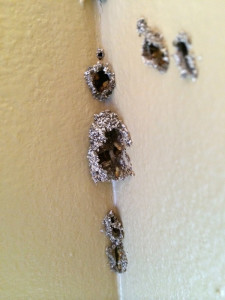
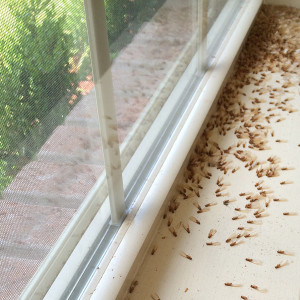
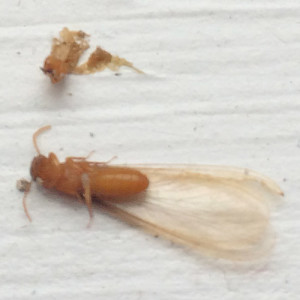



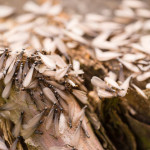
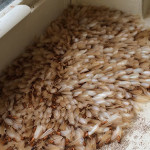
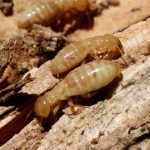
I never knew that termites can work up their way in your house and damage it more. With that in mind, I will be contacting professionals to check our house already. This is important before they multiply since I have been seeing discarded wings near the wooden shelves we have in our garage. https://www.anteaterpestcontrol.com/pest-services
Yes. We can help so if you’re in the NW Florida area, give us a call at 850-682-5354. Thanks!